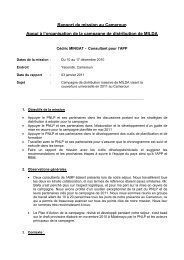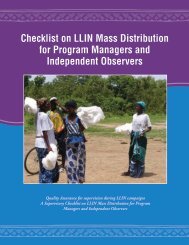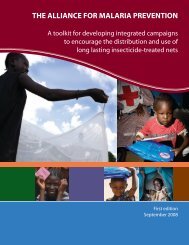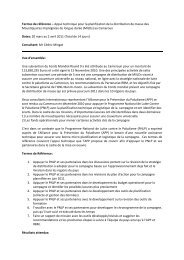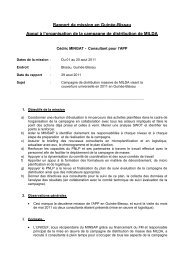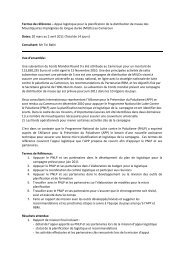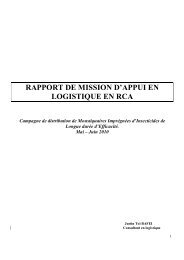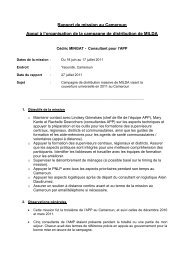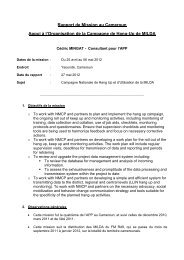Spots - Roll Back Malaria
Spots - Roll Back Malaria
Spots - Roll Back Malaria
- No tags were found...
Create successful ePaper yourself
Turn your PDF publications into a flip-book with our unique Google optimized e-Paper software.
STEP 4: PRETESTto ten participants. It is recommended that you conduct multiple groups with similartypes of participants so that you can detect patterns and trends across groups. Thedisadvantage of groups is that you may have a few people dominating the discussionand may not get the views of all the participants. If you have a complicated spot orwant more feedback from individual members of your audience than you can get ina group discussion, consider conducting individual interviews. Interviews give eachparticipant more time to respond. You would need to conduct 25 to 30 interviewswith your target audience to get a good sample of feedback. You can also combinethese methods. (For more information on research methods, see Annex 1.)You should work with a researcher with some field experience. A researcher can helpwith logistics (how to manage and organize the research) and interpreting the results.The usefulness of your pretest findings will depend on the relevance andcompleteness of the information you collect. This, in turn, depends on thequality of interviewing and the recruitment of appropriate participants.Keys to getting valuable, insightful pretest results Use research methods that will give you the results you need. Use questionnaires that will get answers in a logical, conversational way. Carefully screen participants according to recruitment criteria. Carefully select facilitators, note takers and those who will screen participants. Train facilitators, note takers and “screeners,” including providing actual practiceexperience. Organize and schedule the research activities and materials from start to finish.The questionnaire: Five measures of effectivenessBefore holding your focus groups or interviews, you will need a pretesting guide (seeAnnex 2 for a sample guide). These guides are generally designed to gatherinformation on these five areas:• Acceptability: Is anything in the message offensive? Is there anything that peopleperceive to be false and unrealistic? Which spot is the most acceptable andbelievable?• Comprehension: Do people understand the spot’s main message? Do peopleunderstand the call to action? Is the language appropriate? What words can makethe message clearer? Which spot is most clearly understood?• Personal relevance: Does your target audience perceive that this spot is talking tothem or to others? Is the call to action something they can do? Which spot isperceived to be the most relevant?• Attraction: Is the spot interesting enough to attract and hold their attention? Dopeople like it? Which spot attracts the most attention and is best liked?58 Spot On <strong>Malaria</strong>: Guide




